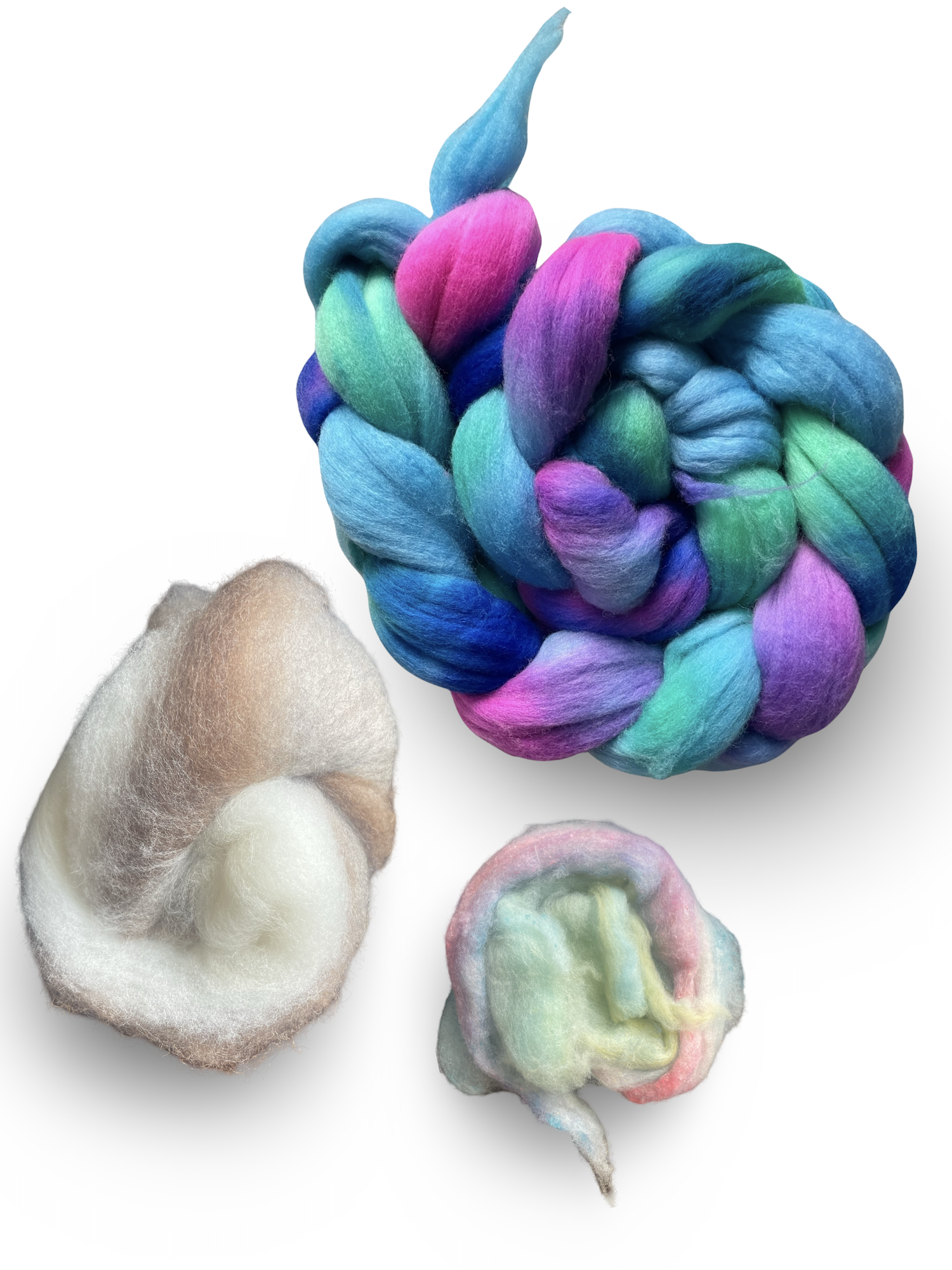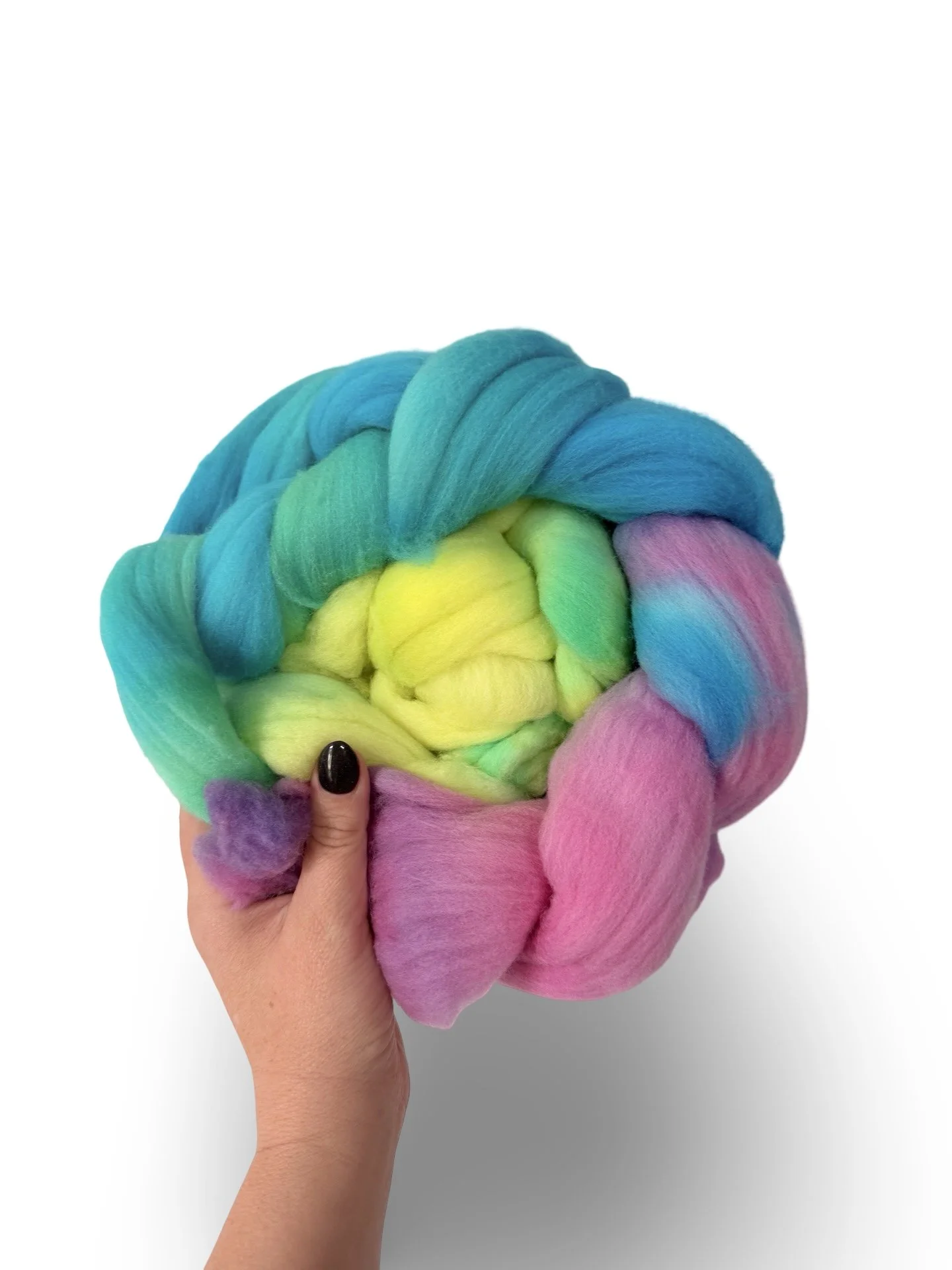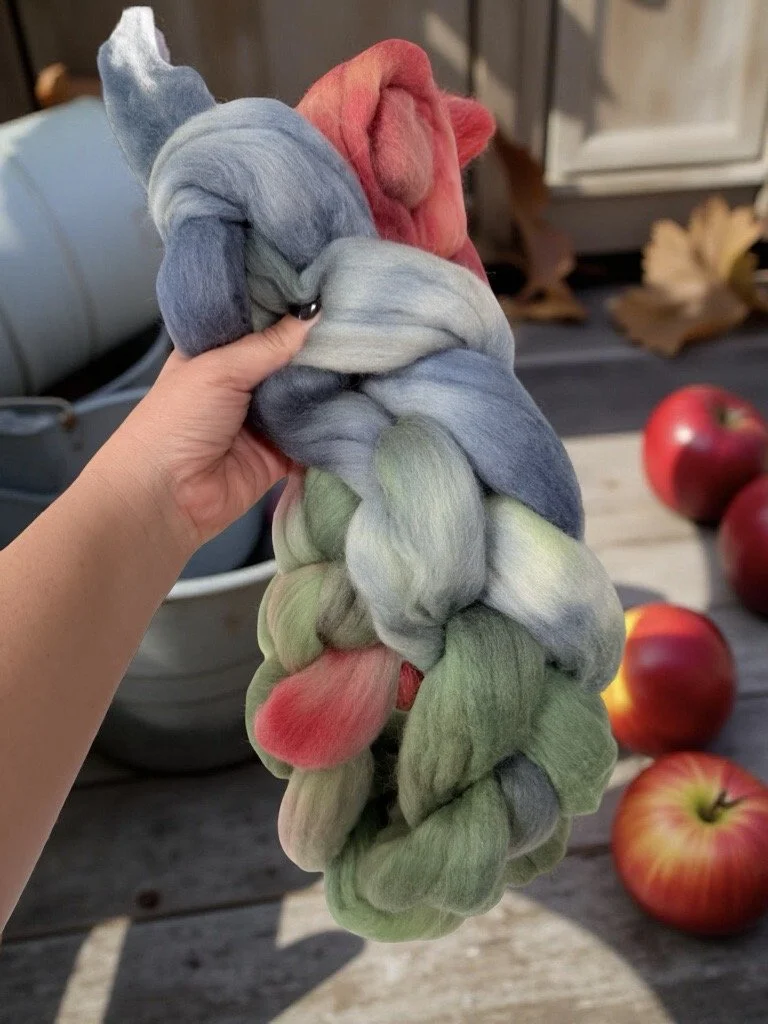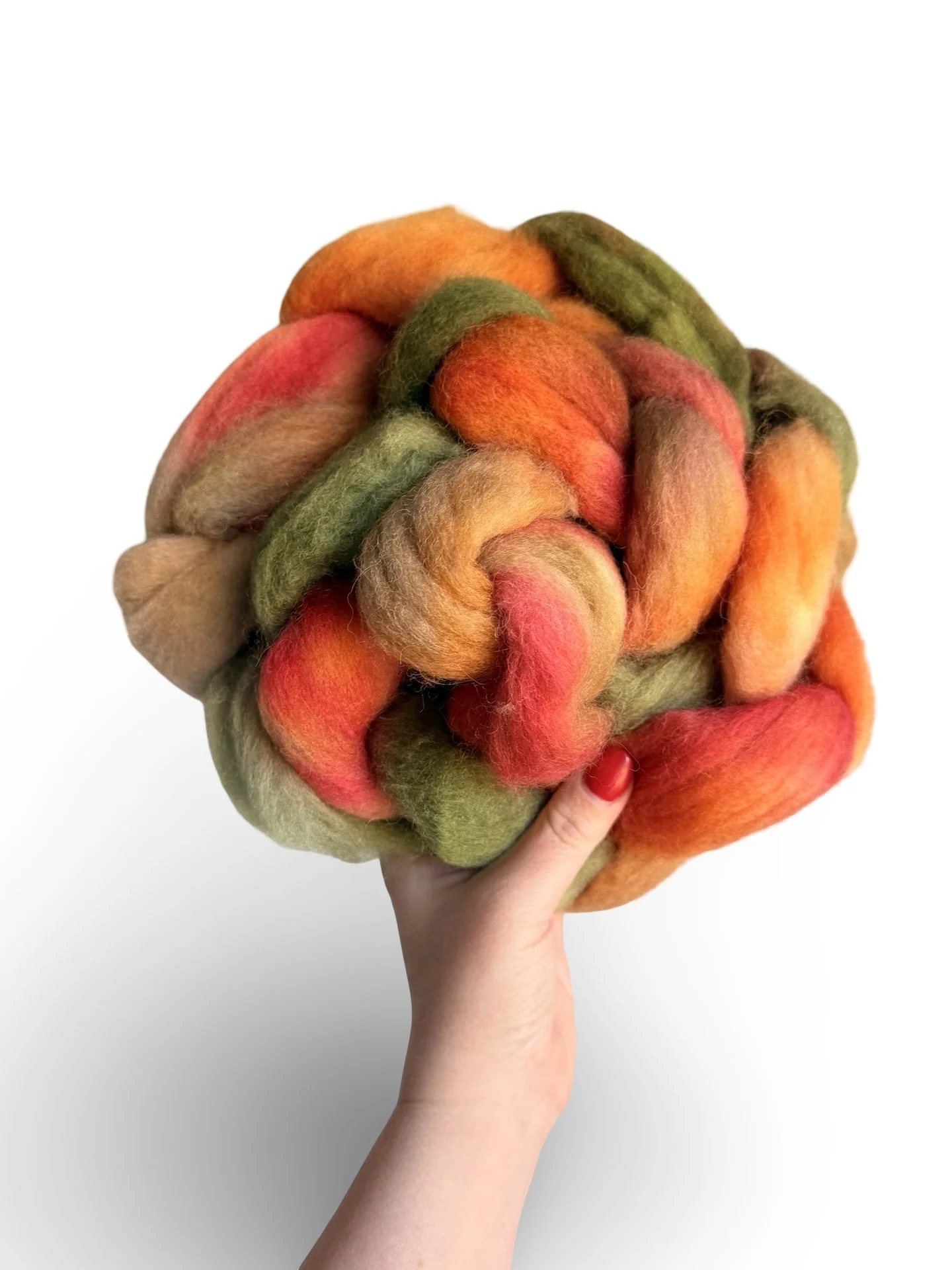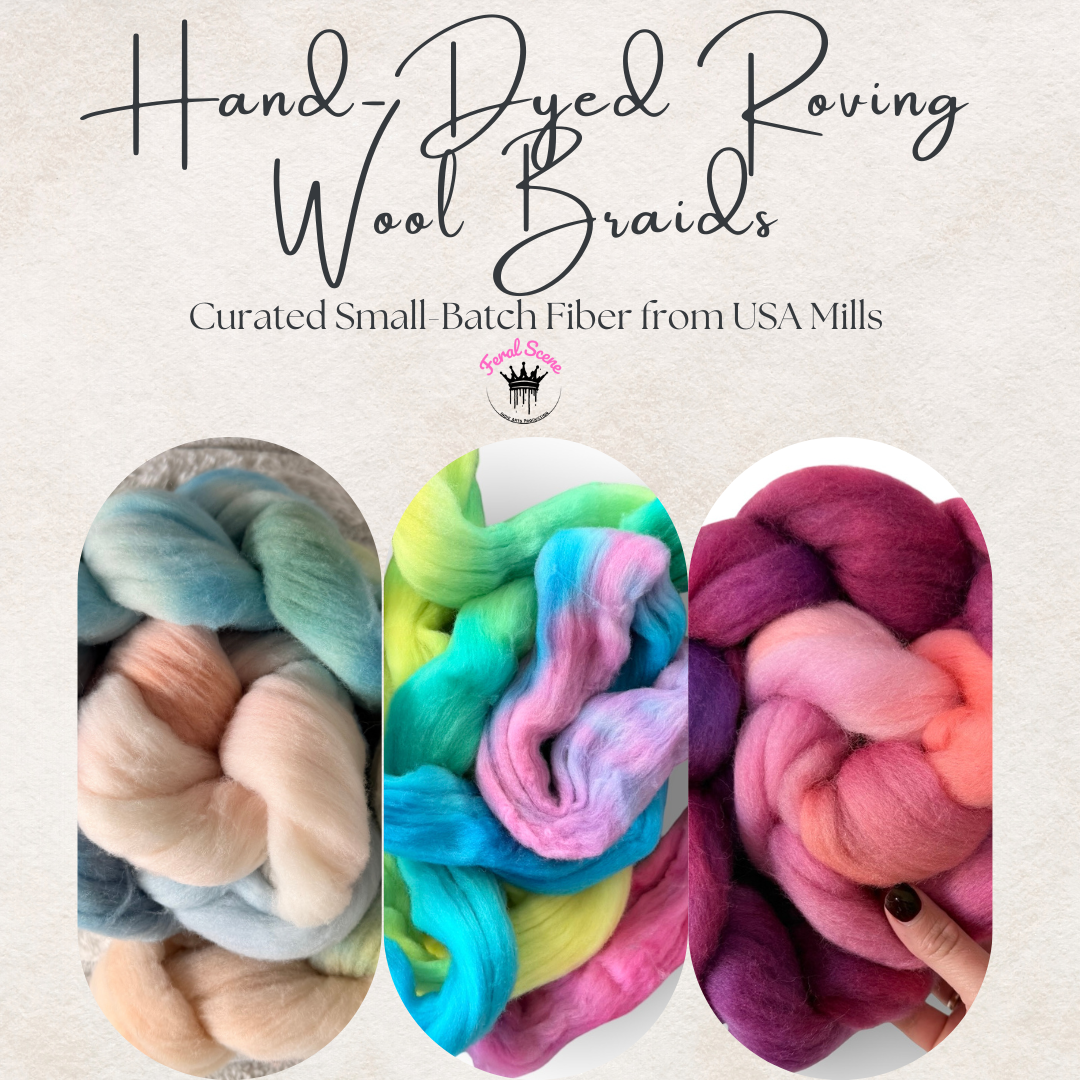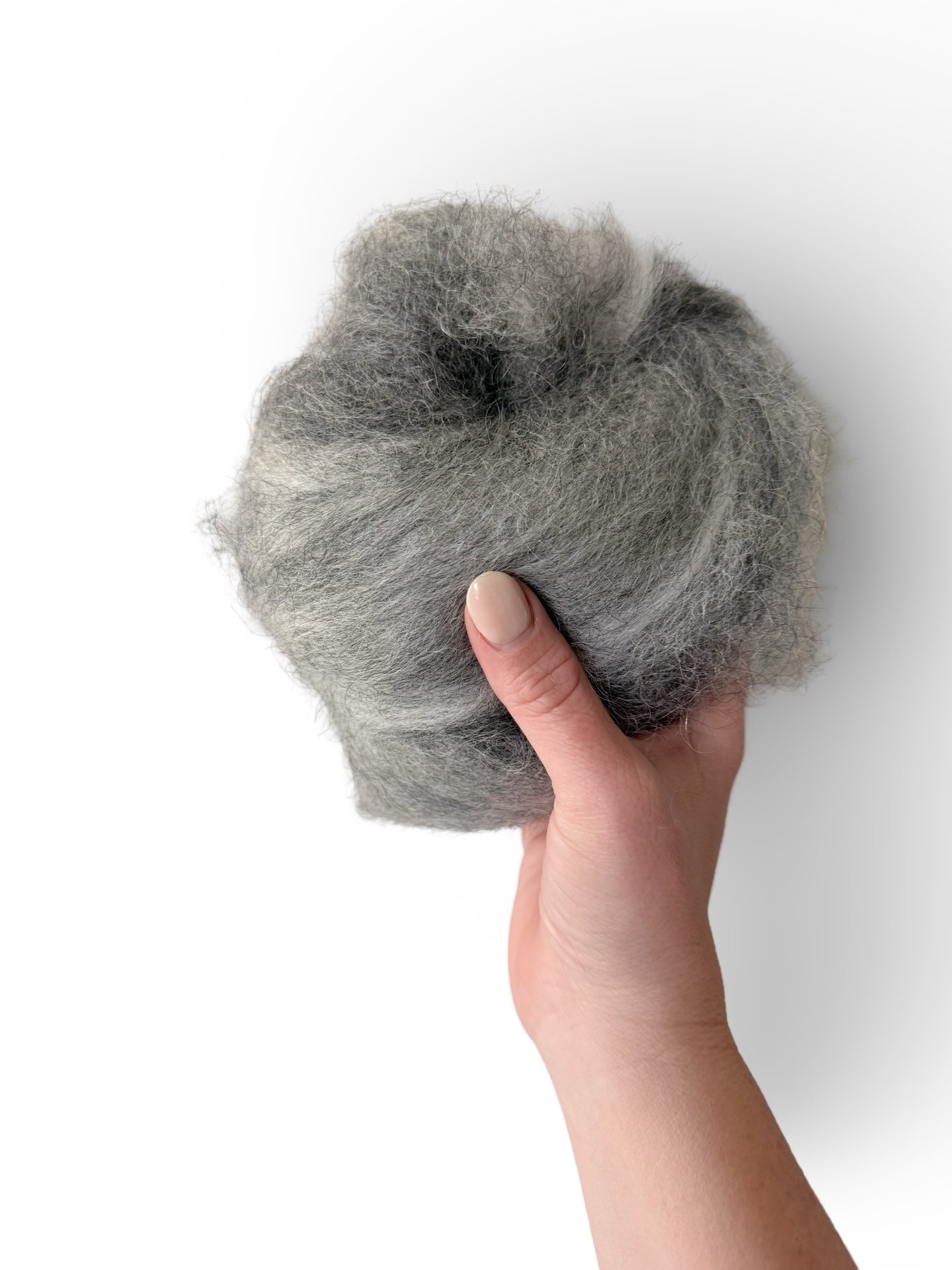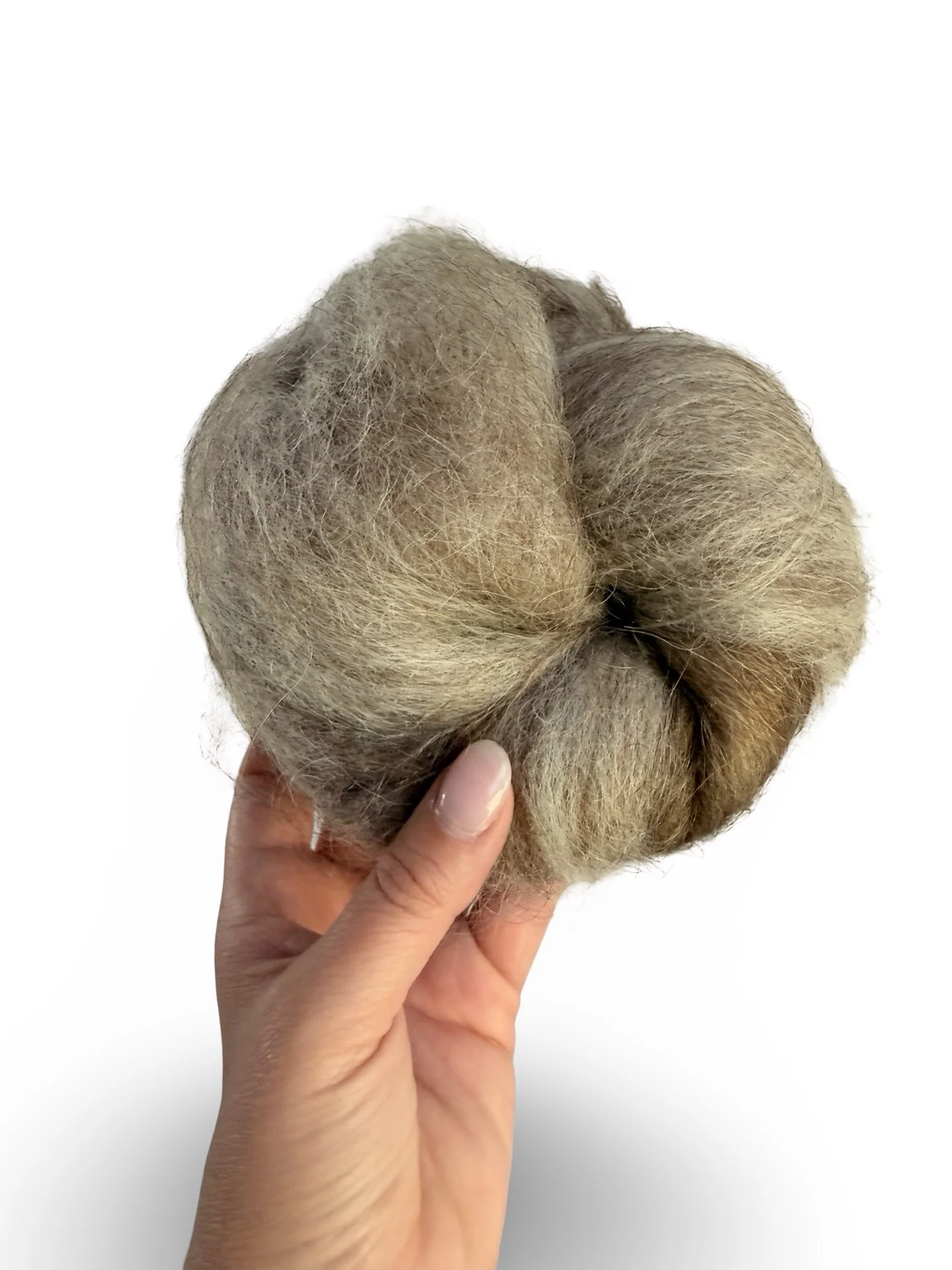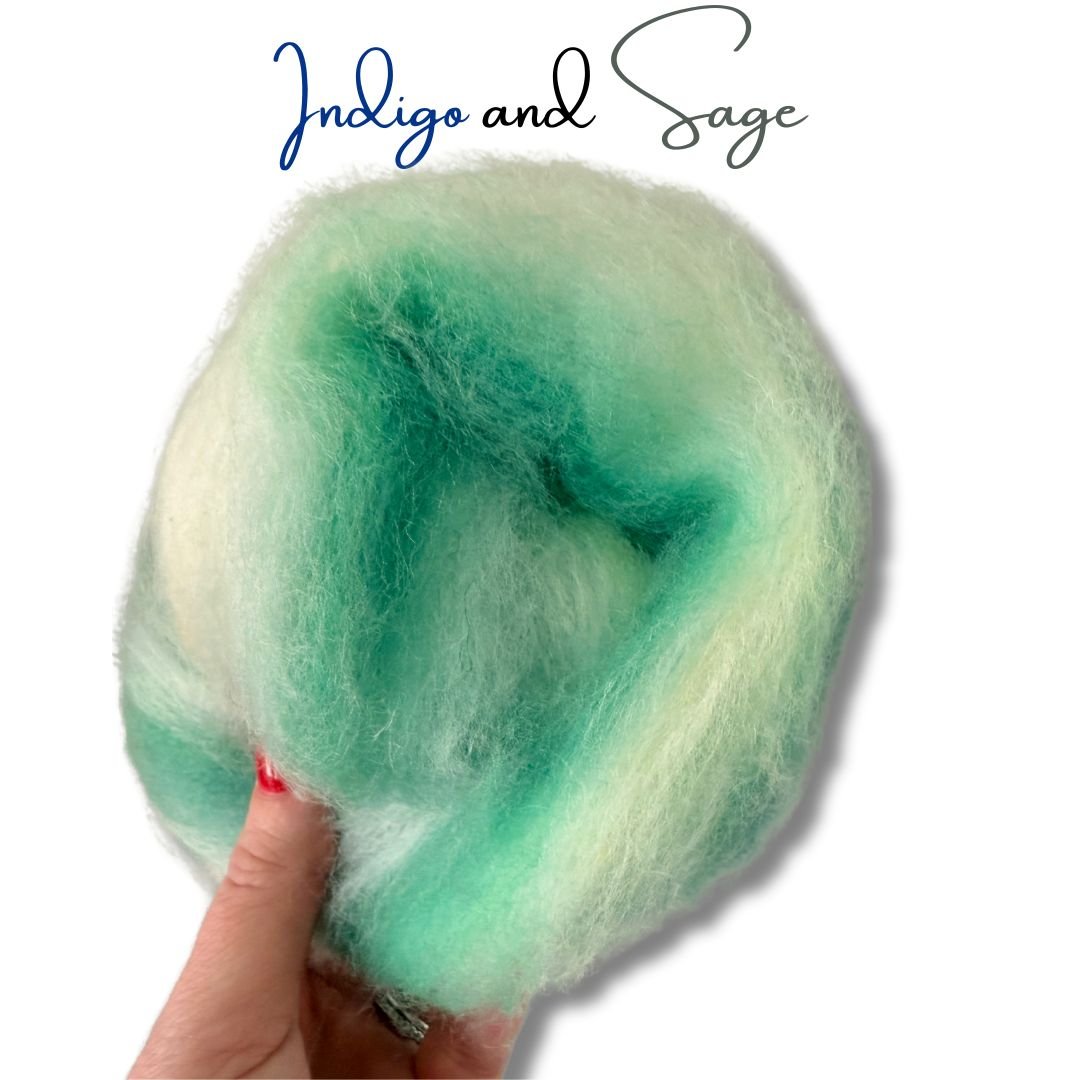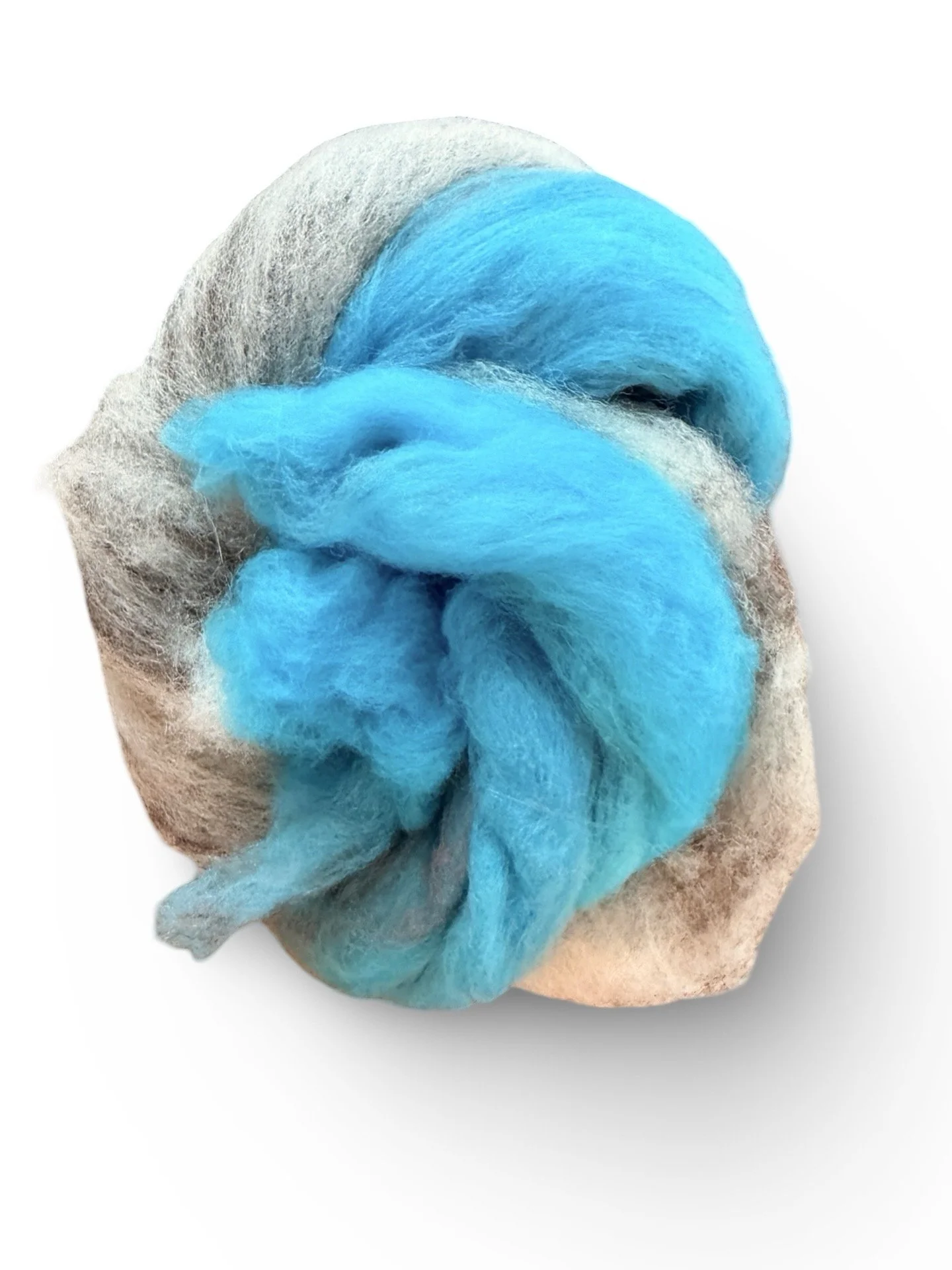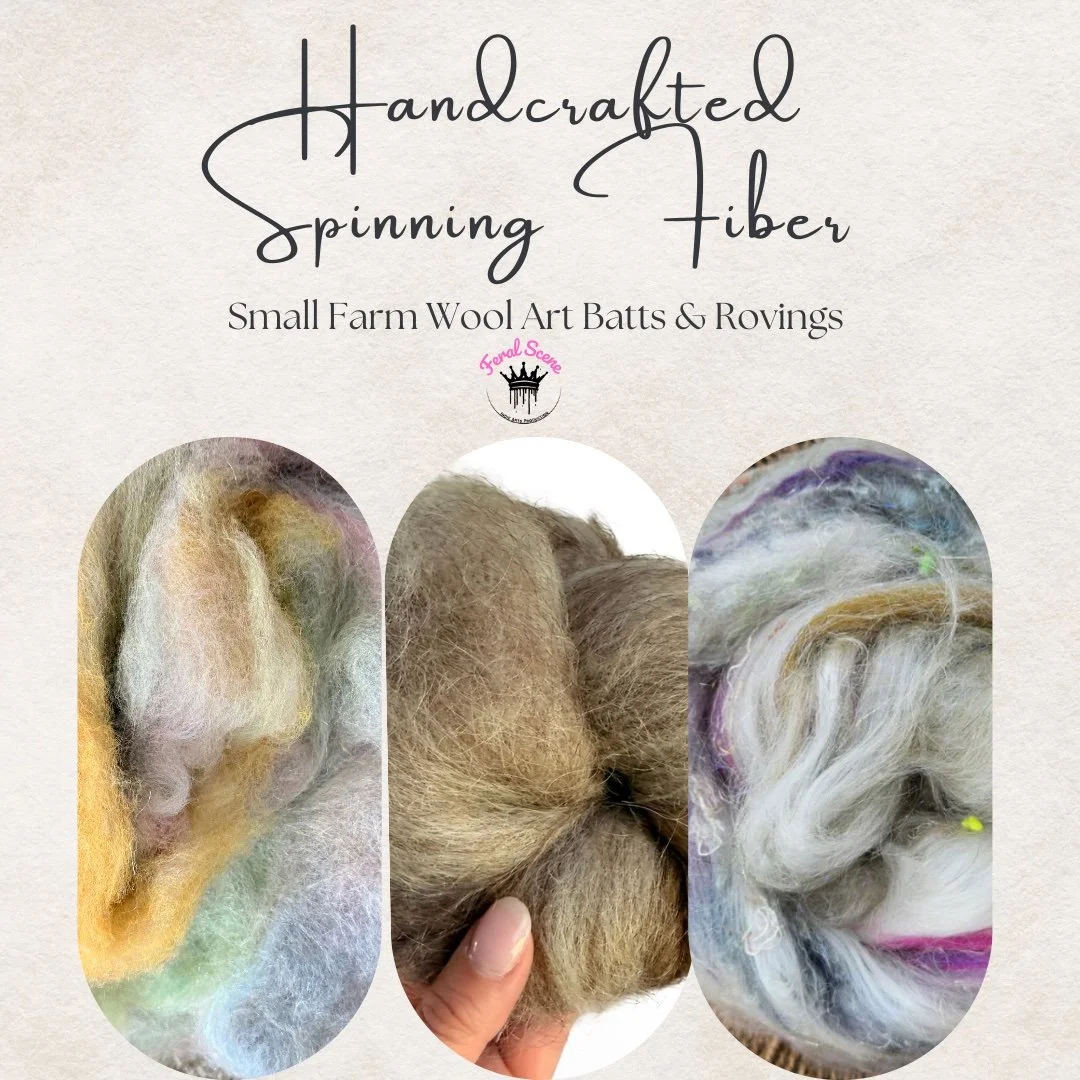The Importance of Using Reclaimed Wool
The Importance of Using Reclaimed Wool
a fiber arts blog from Crafty Housewife Yarns
The First time I heard of using recycled yarn was from my friend Dawn who owns Twice Sheared Sheep. You are probably falmilur with this brand because I love to collaborate with her for our yarn kits and bundles. Like most of us she started her business out in one direction and then it has grown and changed since then but I know that one of her main focus when she started was “recycled" or “ reclaimed yarn” You can hear more about that directly from Dawn here
Here at CHY I’m not so much up cylicing yarn but rather enjoying using reclaimed wool in our products. In our case that is where wheel the fleeces are processed into clean and useable wool for our batts or custom rovings we are able to work with boutique mills that will save and reuse some of the wool that didn’t make it though the first pass. If you’ve ever used a drum carder yourself you know all about how a good bit of lovely wool and fiber can be stuck on the machine while hand blending. Where in many cases larger mills would end up not saving this wool we love that we can reduce it and give it another life. I had fun using some myself for some incredibly soft Merino Batts I was dividing up. You've also proababy seen it in our work in the way of reclaimed Sari silk and “ wool neps “ for a tweed texture.
Here is a bit of researched info I’ve put together for different ways that the wool industry can be involved in recycling wool and yarn on large and small scale.
Wool has been a prized textile for centuries, known for its warmth, durability, and natural qualities. However, it is crucial to address the environmental impact of wool production and find sustainable alternatives. One such solution lies in reclaiming wool and using it in spinning mills to create yarn. Here, we will explore the importance of utilizing reclaimed wool in spinning mills and the benefits it offers.
1. Waste Reduction and Resource Conservation
In the process of reclaiming wool, unused or discarded garments and textiles are collected and transformed into new yarn. This practice reduces waste and diverts materials from ending up in landfills, extending the life cycle of wool and decreasing the need for virgin wool production. By utilizing reclaimed wool in spinning mills, we conserve resources such as water, energy, and raw materials that would otherwise be required for manufacturing new wool fibers.
2. Quality and Character
Reclaimed wool brings a unique and desirable quality to the roving and spinning wools. This process results in a softer, more textured wool that can add depth and character to the final product. By incorporating reclaimed wool in spinning mills, we not only reduce waste but also create yarn with a distinctive charm.
3. Promoting Circular Fashion
The use of reclaimed wool in spinning mills aligns with the principles of circular fashion. By recycling and repurposing wool, we contribute to creating a closed-loop system where materials are continuously reused, reducing the dependence on new resources. This approach helps to break the linear "take-make-dispose" model of the fashion industry and promotes a more sustainable and environmentally-friendly way of producing textiles.
4. Supporting Local Communities
The process of collecting and reclaiming wool often involves working with local communities and artisans, creating opportunities for economic growth and skill development. By supporting spinning mills that focus on reclaimed wool, we contribute to the livelihood of these communities, helping to preserve traditional crafts and techniques associated with wool production.
5. Educating Consumers
Using reclaimed wool as a significant component in spinning mills provides an excellent opportunity to educate consumers about the importance of sustainable fashion choices. By highlighting the benefits and qualities of reclaimed wool yarn, we encourage individuals to make more conscious decisions when purchasing yarn and other wool products.
In conclusion, incorporating reclaimed wool in spinning mills holds tremendous significance for the textile industry and the environment. By reducing waste, conserving resources, promoting circular fashion, supporting local communities, and educating consumers, we can contribute to a more sustainable and ethical wool production system. Let us embrace the use of reclaimed wool yarn and be part of the positive change towards a more responsible and environmentally-conscious fashion industry.



